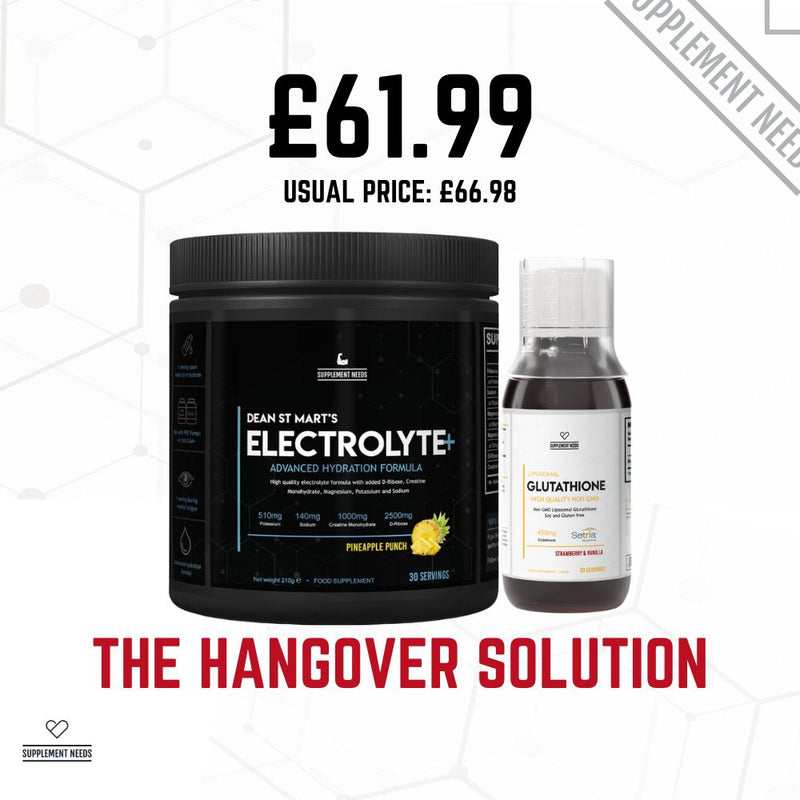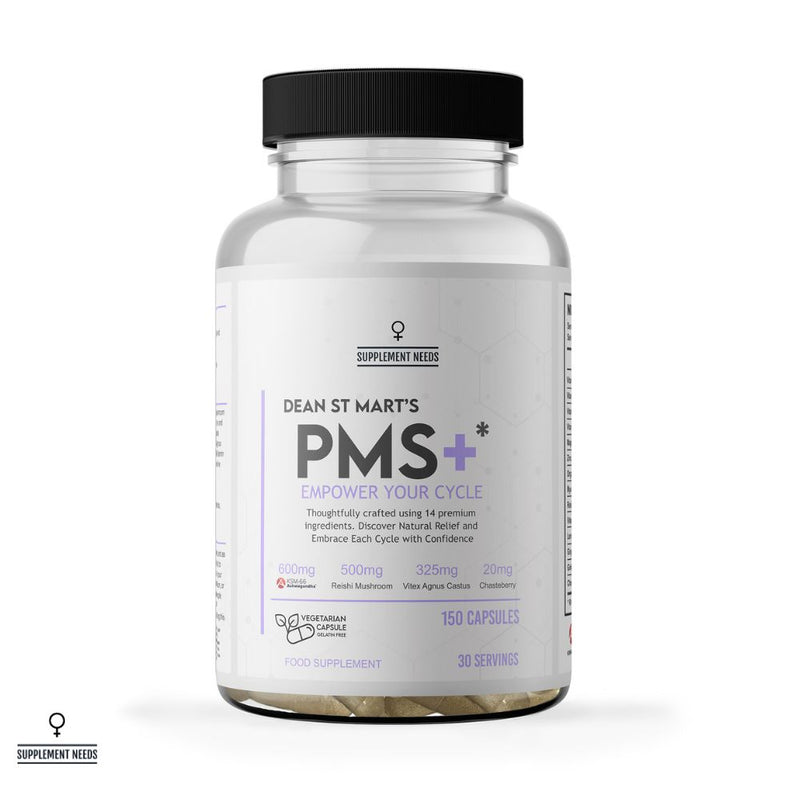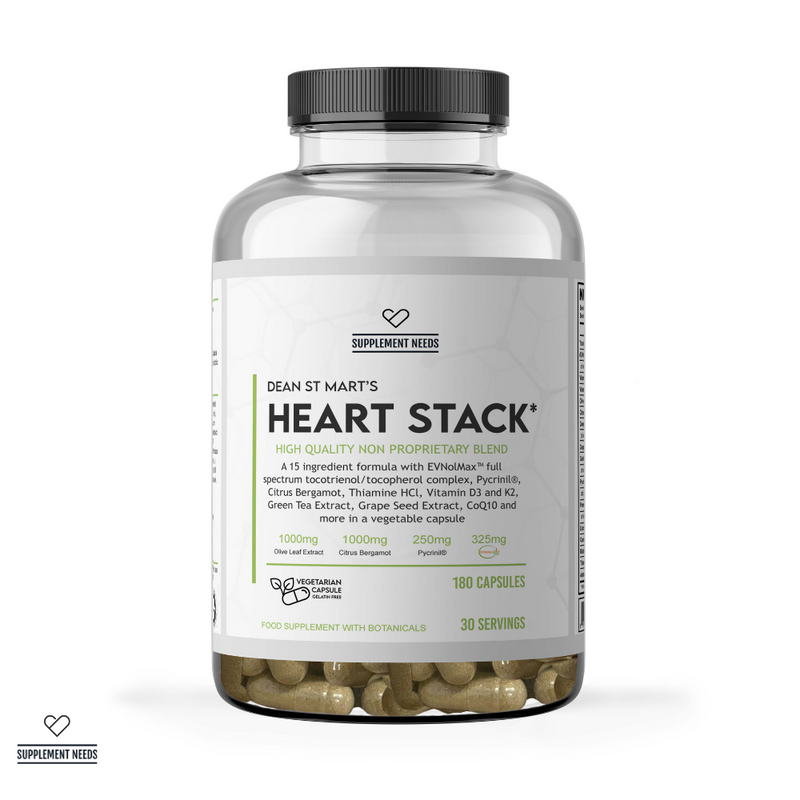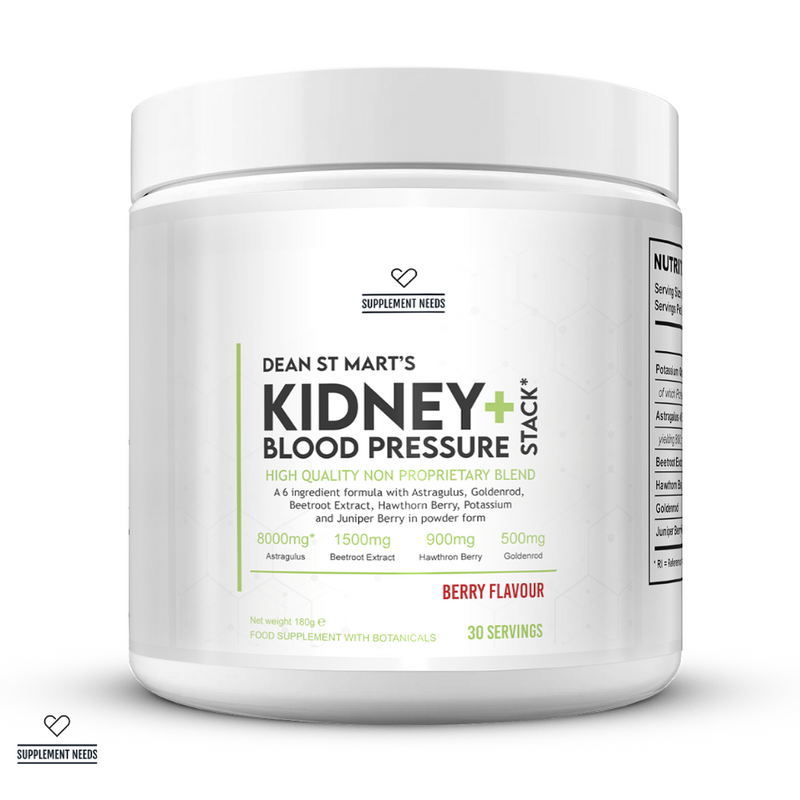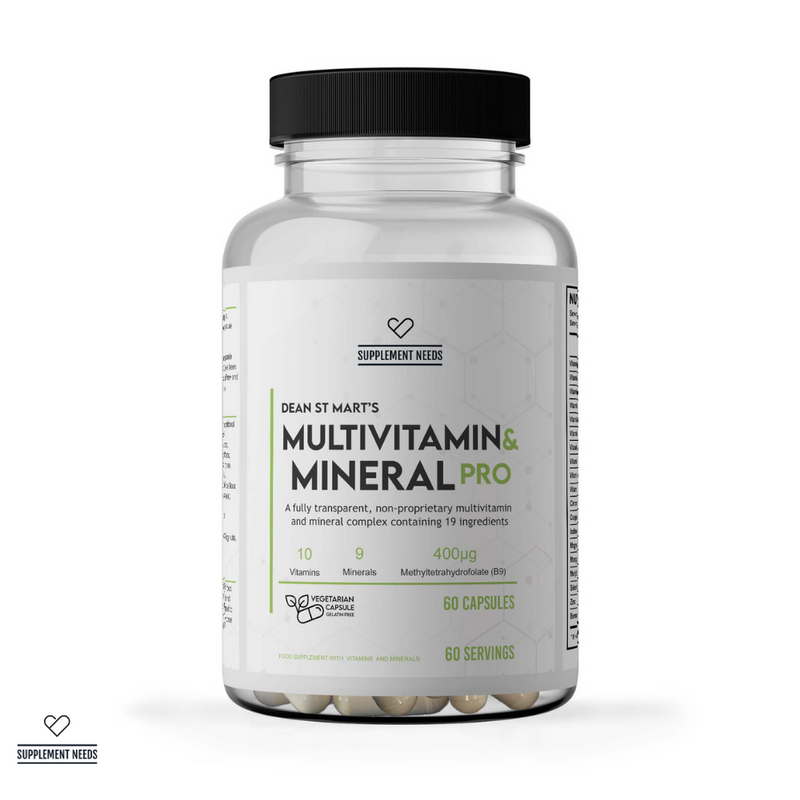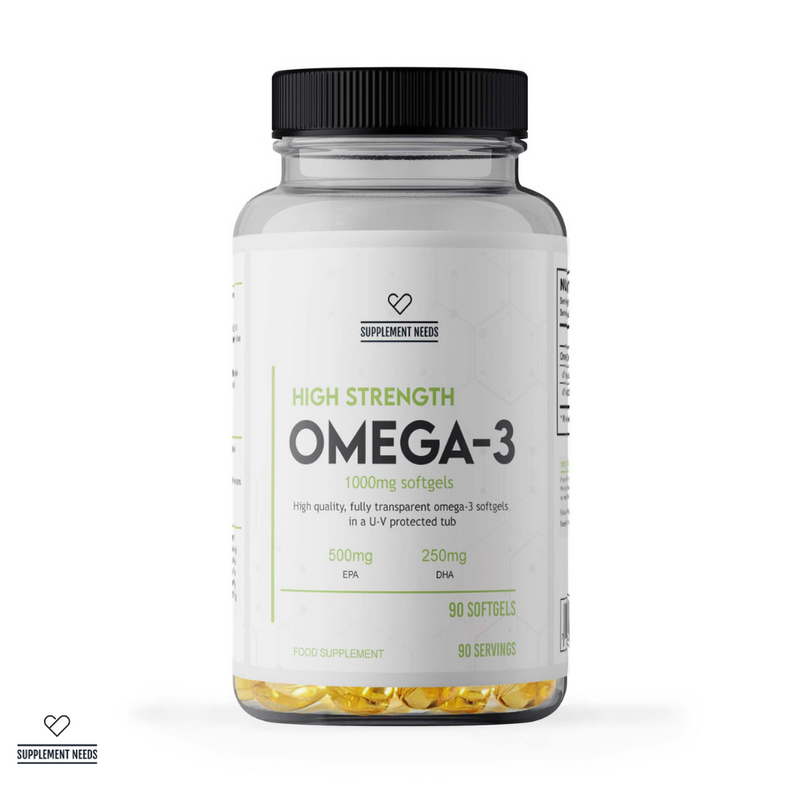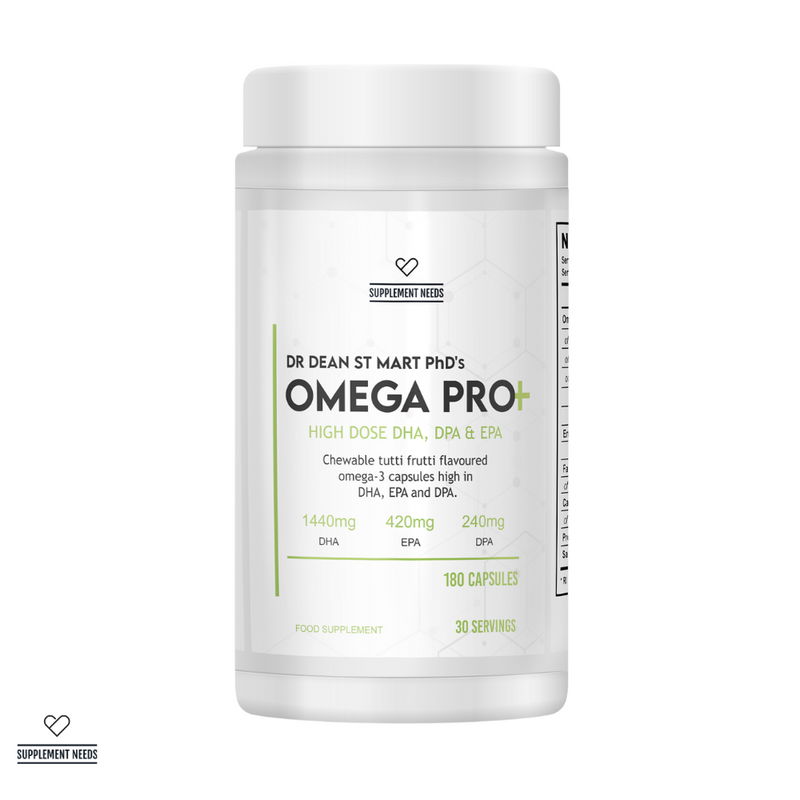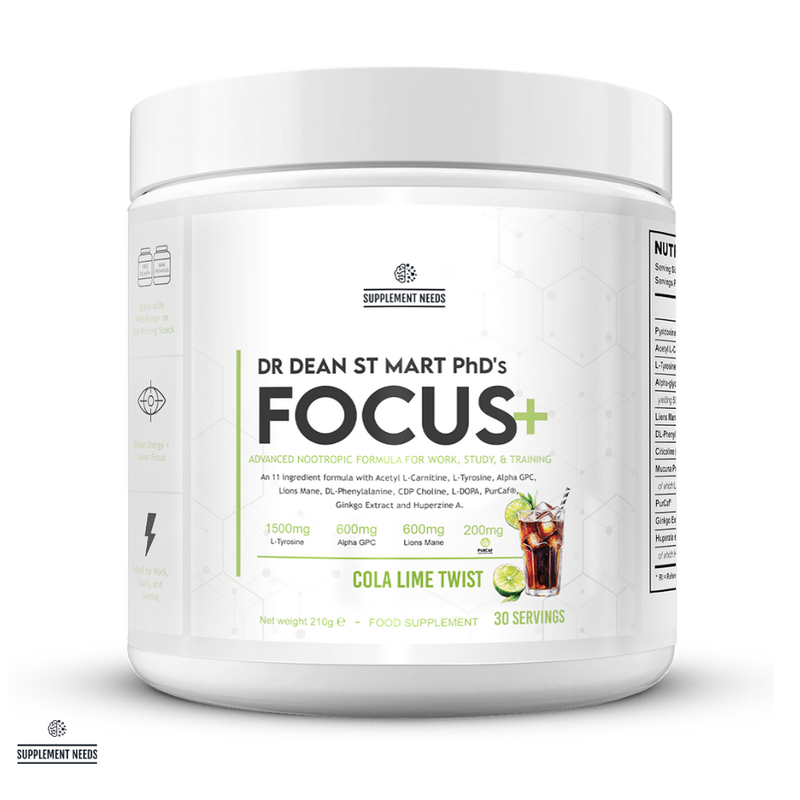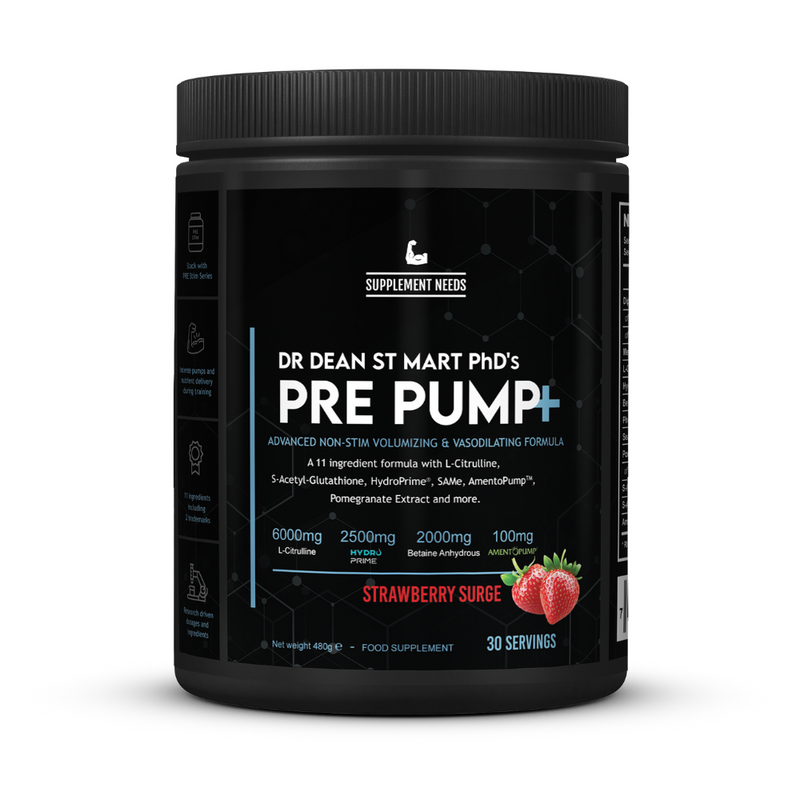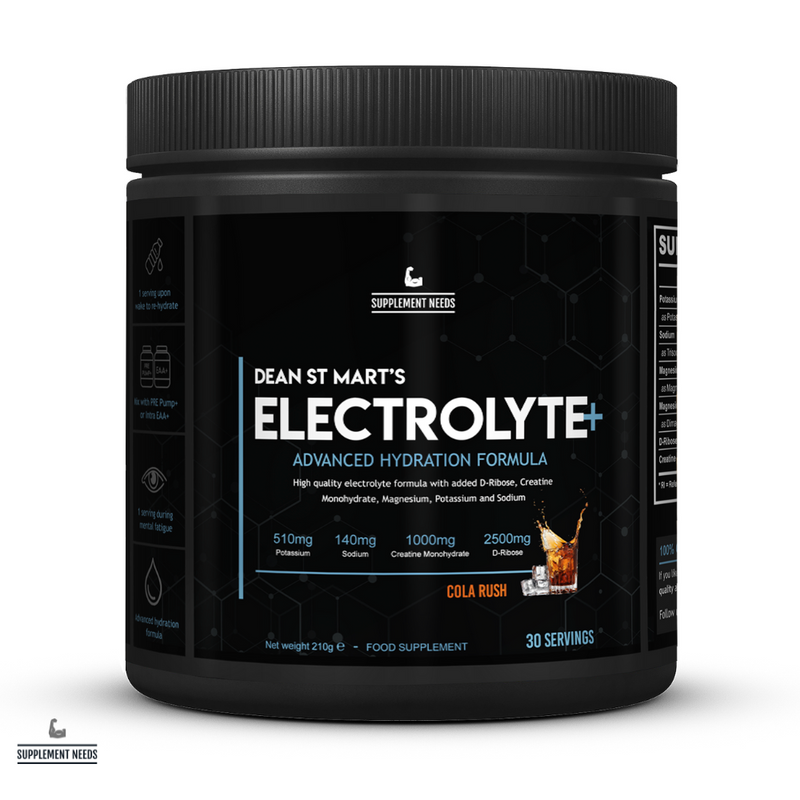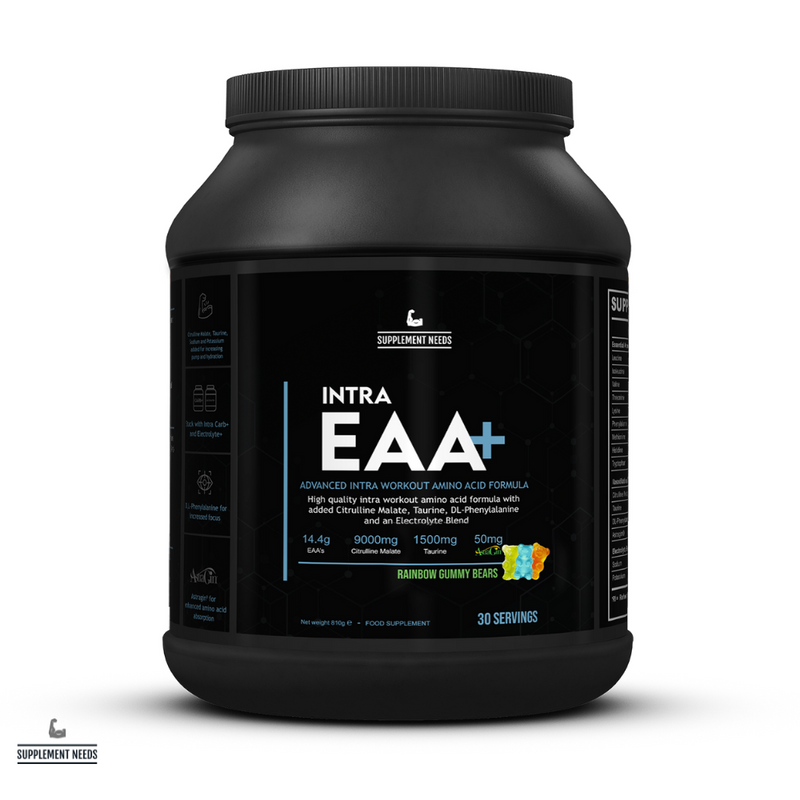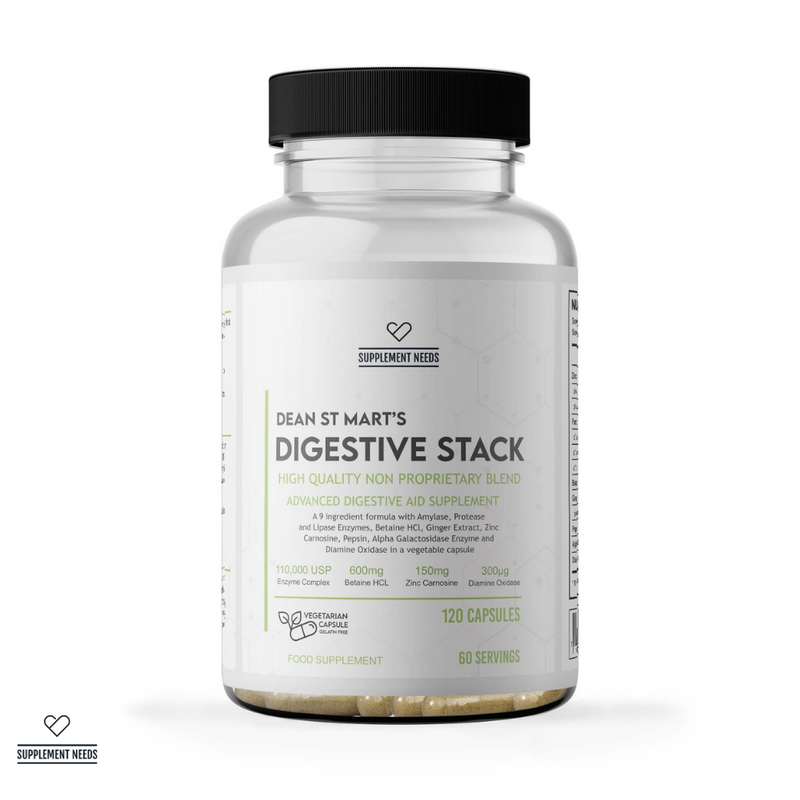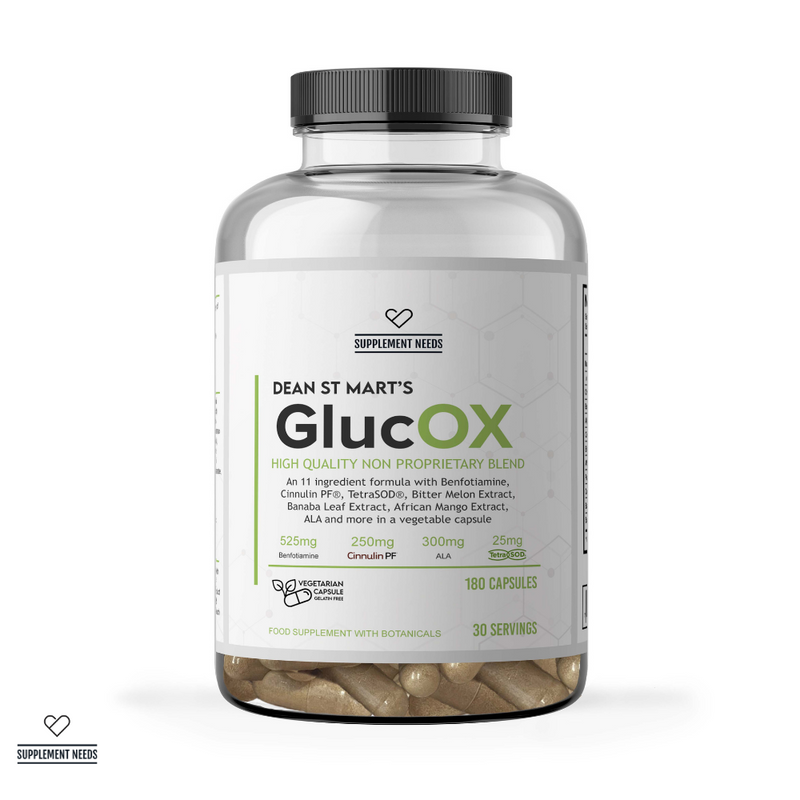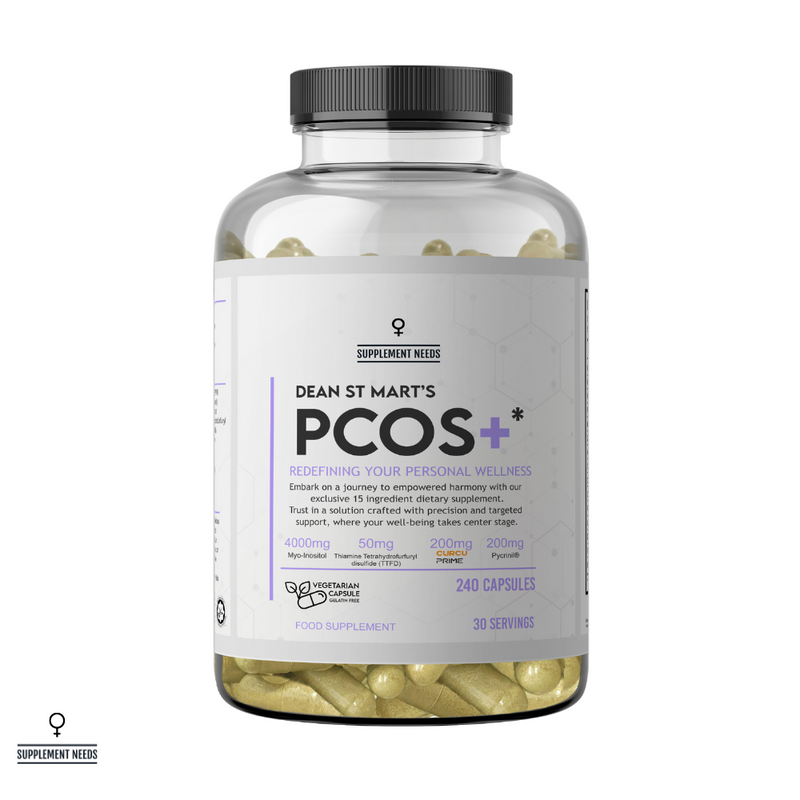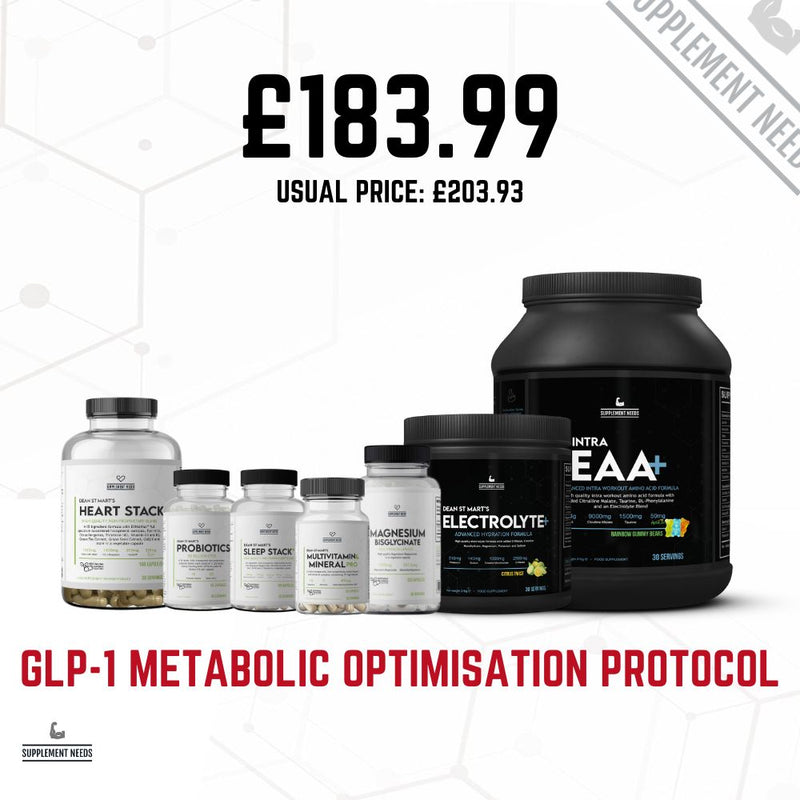If you’re serious about working out and making gains, then you’ve probably heard about cyclic dextrin (and carbohydrate supplements more generally). However, if you’re yet to dip your toe into the world of cyclic dextrin and want to learn more first, then you’re in the right place. Find out everything you need to know about cyclic dextrin in this detailed guide from the Supplement Needs team…
What is cyclic dextrin?
In sports nutrition, ‘cyclic dextrin’ is typically shorthand for highly-branched cyclic dextrin (HBCD) - a specialised carbohydrate produced from waxy corn starch (amylopectin) via a cyclisation reaction using a branching enzyme. The resulting carbohydrate preserves the amylopectin’s ‘cluster’ architecture, creating a high-molecular-weight, low-osmolality powder that dissolves easily and tastes neutral1.
To put this more simply:
-
Cyclic dextrin is a type of carbohydrate powder made from corn starch.
-
It is made using enzymes to re-arrange the starch from long straight chains into big, bushy clusters.
-
These bigger clusters mean there are fewer tiny particles in your carb drink, making it easier on the stomach.
-
Cyclic dextrin also dissolves well in water and has a neutral, not-too-sweet taste.
The last two bullet points are particularly pertinent. Why? Because, they mean that cyclic dextrin has excellent properties as a supplement. With a higher molecular weight and lower osmolality - cyclic dextrin will leave the stomach faster and not ‘hang around’ and cause bloating.
What is highly-branched cyclic dextrin (HBCD)?
To get straight to the point, ‘cyclic dextrin’ almost always refers to highly-branched cyclic dextrin, with the two terms being used interchangeably.
HBCD is manufactured by enzyme-modifying amylopectin into clustered, cyclic/branched structures that keep molecular weight high and osmolality low - which, as we saw above - are highly desirable traits in a carbohydrate supplement (particular for intra-workout fuelling).
Note: there is a patented version of cyclic dextrin known as Cluster Dextrin® which is manufactured by Glico. This patented form of cyclic dextrin is used extensively across the supplement industry, including Supplement Needs Carb+, which uses 25,000mg of Cluster Dextrin per 30.8g serving.
What is cyclic dextrin used for?
One of the most commonly asked questions about cyclic dextrin regards its use. What exactly should you use it for? How should cyclic dextrin fit within your broader supplementation and workout routine?
Below, we’ve covered the main use cases of cyclic dextrin.
Intra-workout fuelling
One of the most popular and widespread uses of cyclic dextrin is as an intra-workout fuel. More specifically, cyclic dextrin is used as an intra-workout supplement as it provides better gut comfort, leaving the stomach faster than equal-concentrations of alternatives such as glucose, maltodextrin or sucrose.
To put this another way, cyclic dextrin allows you to fuel your workout, but with significantly less gastric distress than alternatives. Faster gastric emptying reduces the amount of fluid and sugar sitting in the stomach during hard exercise - with this being the primary reason many athletes report less sloshing, bloating and nausea with cyclic dextrin2.
This isn’t merely a supposition, either. There are studies to back up the point above. For example, in human studies using a 10% sports-drink concentration, cyclists reported fewer GI symptoms on cyclic dextrin versus glucose/maltodextrin3. That’s why many high-level athletes will sip cyclic dextrin during intense training sessions.

Lower perceived exertion
Another key reason that athletes and weekend warriors alike tend to use cyclic dextrin is around perceived exertion.
According to randomised, crossover human trials4, modest doses of high-branched cyclic dextrin (HBCD) during endurance exercise can reduce rating of perceived exertion (RPE). This is certainly true when compared to isocaloric maltodextrin, even when the workload is identical - which suggests that HBCD either improves metabolic stability or lowers central sensations of effort linked to gut comfort or substrate sensing. For example, one controlled trial reported lower RPE with 15g of HBCD versus maltodextrin during steady endurance work5.
We appreciate this is rather technical - so, what does this mean in more simple terms?
Well, basically, athletes describe the same workout as “feeling easier” when sipping HBCD (compared to alternatives). That means they are theoretically able to maintain the same effort/speed whilst feeling less worn out. This is likely due to the body getting more fuel, more smoothly, with your stomach not causing any distractions.
Performance improvements
In certain contexts, some athletes believe that ingesting cyclic dextrin can potentially result in performance improvements.
Take elite swimmers, for example. A small, but well-controlled study found that the intake of HBCD (vs glucose or water) significantly increased time to exhaustion and better maintained blood glucose late in exercise - supporting greater CHO oxidation (burning of carbs for energy) during high-intensity swimming bouts6.
Another study - which examined stress hormones and urinary cytokine markers - found that in triathletes an HBCD-based sports drink attenuated (that is, lessened) post-exercise increases in some stress hormones. This has particular implications for individuals who repeatedly train hard and want faster recovery7.
To boil this all down into simpler terms - some studies suggest that HBCD helps people go longer before tiring, and (potentially) helps the body handle hard exercise “a bit more easily”8.
Note: these performance effects are very much context-dependent.
Recovery
It has been postulated that cyclic dextrin (or, more specifically, HBCD) can speed gastric emptying and - in turn - increase early muscle glycogen resynthesis rates compared to low-molecular-weight carbs (bear in mind that HBCD is a member of the high-molecular-weight group of carbs).
This is reinforced by studies that indicate that HBCD (and other high-molecular-weight products) can result in faster glycogen restoration and improved subsequent exercise outcomes9.
Let’s break this down into simpler terms: if you have to train or compete within only a few hours, HBCD-style carbs can load your muscles with fuel more quickly than ordinary carbs/sugars - meaning you may recover faster between sessions.
Hydration
The ingestion of HBCD has been associated in studies with improved hydration outcomes.
Why? Well, we need to get technical for a second.
Because intestinal glucose uptake is actively coupled to sodium transport through SGLT1 (a protein located in the intestine and kidneys that effectively acts as a ‘door’ in your gut that helps pull sugar and salt into your bloodstream), combining carbohydrate with sodium improves net fluid and solute absorption10.
This is particularly prevalent during prolonged periods of exercise.
To put this in more simple terms, both sugar and salt together help your gut pull both sugar and water into your bloodstream faster than water alone. HBCD is not only easier on the stomach than alternatives, it is a fast-absorbing sports drink when combined with sodium.

How does cyclic dextrin compare to other types of carbohydrates?
Cyclic dextrin isn’t the only carbohydrate that people supplement their diet with. Other carbohydrate alternatives include maltodextrin, dextrose and other high-molecular weight starches.
The question is, what’s the difference? How does cyclic dextrin compare to alternatives? The table below sets out the key differences and characteristics you should be aware of:
|
Carb Type |
Molecule Size |
Osmolality |
Gastric Emptying |
Pros |
Cons |
|
Cyclic Dextrin |
Very high molecular weight |
Low - few dissolved particles per g |
Faster gastric emptying than other carb types |
Excellent gut comfort; low sweetness; mixes cleanly |
Premium price vs other carb types |
|
Maltodextrin |
Short-moderate glucose chains - lower molecular weight than cyclic dextrin |
Moderate to high osmolality (more particles than cyclic dextrin) |
Slower than cyclic dextrin |
Cheap; neutral taste; widely used |
More GI issues at high loads vs cyclic dextrin |
|
Dextrose |
Very small monomer particles |
High osmolality |
Slower emptying - can cause stomach fullness |
Fast acting; cheap; simple |
Can cause rapid glycaemic swings |
|
Glucose & Fructose Blends |
Mixed mono/disaccharides |
Varies depending on concentration |
Can be formulated to empty reasonably fast |
Enables higher total carb oxidation |
Fructose can upset some people’s stomachs |
|
Waxy Maize Starch |
Typically marketed as a high-molecular weight ‘slow-digesting starch’ |
Varies depending on processing/gel formation |
Gastric emptying is generally good |
Good for recovery use; provides sustained-energy |
Benefits can be context and product-dependent |
|
Palatinose™ (Isomaltulose) |
Small molecule size with slow enzymatic hydrolysis |
Low-to-moderate osmolality |
Slow gastric emptying than some alternatives |
Low glycaemic response; suitable for metabolic control |
Not ideal alone for high-intensity short notice fuelling |
Key Takeaway: if you want to drink more carbs without stomach distress, then choose highly-branched cyclic dextrin. It behaves more like water and usually causes less ‘stomach slosh’.
Which carb is right for me?
As you’ve just read above, highly-branched cyclic dextrin has myriad characteristics and qualities that make it the best choice for most people. But, why? We’ve broken down the three physiological concepts that should influence your choice:
-
Osmolality: this is effectively ‘particles per litre’. Hence, the lower the osmolality, the faster you’ll experience gastric emptying, and thus have fewer gut issues11.
-
Intestinal transportation: how does the carb actually ‘get into’ your body. In short, your gut has a limited number of ‘doors’ to absorb carbs. When ingested, HBCD is first broken down into smaller sugars (e.g. glucose), which are then absorbed via the SGLT1 transporter (the sodium-glucose ‘door’ that pulls glucose into the intestinal cells). By using the SGLT1 transporter, HBCD is absorbed rapidly.
-
Glycaemic responses: so-called ‘fast’ sugars such as dextrose hit your blood quickly and can result in insulin spikes. Higher molecular weight carbs like HBCD produce more controlled responses12.
In addition to these physiological considerations, you may also want to consider your choice of carbohydrate based on the type and intensity of workout you are about to undertake:
-
Short workouts (less than 60 minutes): you won’t necessarily need to ‘fuel up’ on carbs for workouts of this duration, although, if necessary, you may wish to have a carb mouth rinse. Studies have shown that carb mouth rinses can result in performance improvements1314.
-
Endurance/high intensity workouts (1 - 2.5 hours): whilst glucose or maltodextrin is fine for this level of workout, many people choose HBCD if they typically experience stomach issues with other carbs15.
-
Ultra-intense workouts (more than 2.5 hours): you may wish to use multiple carbs, e.g. combining HBCD with fructose.
-
Recovery: carbs like HBCD can be good for recovery scenarios where you want faster glycogen resynthesis. For maximal results, consider also consuming 20-40g of protein.
How much cyclic dextrin should you take?
If you’ve decided that cyclic dextrin could be a beneficial product to add to your supplementation regime, you may be wondering about the optimal dosage.
The correct answer is - it depends.
The amount of cyclic dextrin you should supplement depends very much on the type, duration and intensity of the exercise you’ll be doing.
As a general rule, you should consider taking the following dosing guidelines:
-
Short workouts (less than 60 minutes): around 10-20g of HBCD. Studies suggest that HBCD is best imbibed by being sipped periodically throughout your workout, rather than drunk all at once16.
-
Typical/average workouts (1 - 2.5 hours): consume approximately 30-60g of carbohydrates per hour. As above, small regular sips are preferable to consumption in one go.
-
Long workouts (more than 2.5 hours): aim to consume around 90g of carbohydrates per hour. For workouts of this duration, you may want to HBCD with a source of fructose to raise the total oxidisable carbohydrate your body can ingest.
Note: the above dosages are just guidelines. You should determine your own preferred dosage (preferably in consultation with a medical professional).
In terms of making up a carb-solution for your workouts, you want to consider the following points:
-
Serving size: typical serving sizes can vary from 25g up to 30g (Supplement Needs Carb+ should be consumed in 30.8g servings).
-
Solution percentage: 5-10% is generally a good solution to aim for. Supplement Needs Carb+ is designed to be mixed at a ratio of 30.8g with between 500-700ml of water (this works out at a solution of 5-6%).
What other supplements can you take with cyclic dextrin?
If you’re serious about your health and fitness, then it’s unlikely that your supplementation regime is restricted to only a single supplement. In fact, many body builders, athletes and others who are serious about their health like to ‘stack’ their supplements.
With that in mind, what supplements can be ‘stacked’ with HBCD? Let’s have a look.
Supplement Needs Intra EAA+

Essential amino acids provide the building blocks for muscle protein synthesis (the process your body uses to build new muscle). Essential amino acids can also help recovery when taken peri-workout17.
Supplement Needs Intra EAA+ not only contains essential amino acids, but has been formulated to contain citrulline malate and a small volume of electrolytes, which support carb delivery and hydration.
A great use case for combining EAA+ and Carb+ is during long workout sessions - when you want to keep your energy up (with Carb+), and preserve and grow muscle (with EAA+).
Key Point: EAAs stimulate muscle protein synthesis and help recovery when taken peri-workout with cyclic dextrin.
Supplement Needs Electrolyte+

Electrolytes make the perfect accompaniment to carbs - particularly when you’re focused on a high-intensity, hot workout where you’re likely to be sweating a great deal.
Why? Because, sodium helps move water and glucose across the gut wall, improving your carbohydrate absorption. This is particularly useful if you are trying to consume a large volume of carbs whilst avoiding gastric issues18.
Supplement Needs Electrolyte+ supplies a perfectly formulated blend of electrolytes, including Potassium and Magnesium as well as Creatine Monohydrate and D-Ribose - which combine to support cellular hydration and energy production.
Key Point: electrolytes can boost the absorption of carbohydrates.
Supplement Needs Prot3in Fusion

When stacked with high-molecular weight carbs like cyclic dextrin, protein can accelerate early muscle glycogen re-synthesis and stimulate muscle protein synthesis (better than carbs alone)19.
Thus, it can make - especially after a particularly hard workout, to combine Supplement Needs Carb+ with Supplement Needs Prot3in Fusion to speed your recovery and muscle repair and building.
Key Point: co-ingesting carbohydrates and protein speeds muscle glycogen repletion, helping recovery between close training sessions.20
Supplement Needs Pre Stim+

If you want to improve alertness, reduce perceived exertion and generally have a performance boost, you may consider stacking Supplement Needs Pre Stim+ alongside your carbohydrate supplement.
Combined, these two supplements will combine central drive (caffeine), with steady fuel delivery (cyclic dextrin).
To help you figure out which of these supplements to stack alongside Supplement Needs Carb+, we have created a handy comparison table below:
|
Supplement |
Why Stack? |
When/How to Stack |
|
Supplement Needs Intra EAA+ |
Supplies essential amino acids that help preserve muscle and support recovery when matched with carbs |
Mix and sip during your training session. Ideal to take at the same time as Carb+ |
|
Supplement Needs Electrolyte+ |
Replaces key electrolytes and supports the SGLT1 transport mechanism (aiding absorption of carbs) |
Add to a bottle of Carb+ to sip peri-workout. This will aid hydration and carb uptake |
|
Supplement Needs Prot3in Fusion |
This is ideal for a post-workout/recovery stack, stimulating muscle recovery better than carbs alone |
Immediately after high-intensity, hard workout sessions |
|
Supplement Needs Pre Stim+ |
Acts as a performance booster, improving alertness and complementing Carb+ |
Take Pre Stim+ approximately 30-60 mins before a workout. Sip Carb+ peri-workout |
The ultimate carbohydrate supplement: Carb+ from Supplement Needs
If you’re looking for the ultimate carbohydrate supplement to fuel your workouts, then look no further - you’ve just found it in Supplement Needs Carb+.
Why should you click ‘Add to Basket’? Well, here’s why:
-
🔍 Transparent, no-mystery formula: at Supplement Needs, we’re committed to radical transparency, meaning you have total visibility over what’s in Carb+. No hidden ingredients, no guessing - just straight forward visibility.
-
🎓 Formulated by a scientist, not a marketing brief: Carb+ has been formulated by renowned industry expert Dr Dean St Mart PhD, being built around practical, evidence-based choices.
-
🏃🏻♂️ Uses a proven, athlete-friendly carbohydrate: Carb+ contains Cluster Dextrin®, a trademarked form of highly-branched cyclic dextrin that’s easier on the stomach and trusted by top athletes.
-
💧 Built-in hydration: Carb+ contains HydroPrime® glycerol which is used to improve cellular hydration, allowing Carb+ to act as both a fuel and hydration aid.
-
🏭 Quality manufacturing: Carb+ (like all Supplement Needs products), is manufactured in line with GMP/ISO 22000 standards, meaning it meets the highest-possible quality standards.
-
💪 Designed to be stack-friendly: because Carb+ uses clear labelling, transparent dosages and evidence-based ingredients, it’s easy to stack with your other favourite supplements.

Shop Supplement Needs Carb+ now
For more insights and information about supplements, explore the Supplement Needs blog…
Busting the Biggest Supplement Myths | What Supplements Should Vegans Take? | Creatine: What Does It Do for Your Body?
Disclaimer:
The information on this website should not be used as a substitute for professional medical care or advice. If you have any questions about your health, please contact your doctor.
References:
1. Glico. Cluster Dextrin [online]. Available at: https://www.glico.com/nutrition/en/product/finechemical/cdextrin/ (Accessed on 27th October 2025).
2. Takii H, Nagao Y, Kometani T, et. al. Fluids containing a highly branched cyclic dextrin influence the gastric emptying rate [online]. Available at: https://pubmed.ncbi.nlm.nih.gov/15900642/ (Accessed on 28th October 2025).
3. Furuyashiki T, Tanimoto H, Yokoyama Y, et. al. Effects of ingesting highly branched cyclic dextrin during endurance exercise on rating of perceived exertion and blood components associated with energy metabolism [online]. Available at: https://pubmed.ncbi.nlm.nih.gov/25080121/ (Accessed on 28th October 2025).
4. Shiraki T, Kometani T, Yoshitani K, et. al. Evaluation of Exercise Performance with the Intake of Highly Branched Cyclic Dextrin in Athletes [online]. Available at: https://www.jstage.jst.go.jp/article/fstr/21/3/21_499/_html/-char/en (Accessed on 28th October 2025).
5. Furuyashiki T, Tanimoto H, Yokoyama Y, et. al. Effects of ingesting highly branched cyclic dextrin during endurance exercise on rating of perceived exertion and blood components associated with energy metabolism [online]. Available at: https://pubmed.ncbi.nlm.nih.gov/25080121/ (Accessed on 28th October 2025).
6. Shiraki T, Komentani T, Yoshitani K, et. al. Evaluation of Exercise Performance with the Intake of Highly Branched Cyclic Dextrin in Athletes [online]. Available at: https://www.jstage.jst.go.jp/article/fstr/21/3/21_499/_html/-char/en (Accessed on 28th October 2025).
7. Suzuki K, Shirashi K, Yoshitani K, et. al. Effect of a sports drink based on highly-branched cyclic dextrin on cytokine responses to exhaustive endurance exercise [online]. Available at: https://pubmed.ncbi.nlm.nih.gov/25270782/ (Accessed on 28th October 2025).
8. Jeukendrup A. A step towards personalised sports nutrition: carbohydrate intake during exercise [online]. Available at: https://pubmed.ncbi.nlm.nih.gov/24791914/ (Accessed on 30th October 2025).
9. Aulin K, Sőderlund K, Hultman E. Muscle glycogen resynthesis rate in humans after supplementation of drinks containing carbohydrates with low and high molecular masses [online]. Available at: https://vitargousa.com/wp-content/uploads/2023/06/Cleancopy-PiehlAulin2000_Article_MuscleGlycogenResynthesisRateI.pdf (Accessed on 28th October 2025).
10. Loo D, Zeuthen T, Chandy G, Wright E. Cotransport of water by the Naᐩ/glucose cotransporter [online]. Available at: https://pmc.ncbi.nlm.nih.gov/articles/PMC24099/ (Accessed on 30th October 2025).
11. Aulin K, Söderlund K, Hultman E. Muscle glycogen resynthesis rate in humans after supplementation of drinks containing carbohydrates with low and high molecular masses [online]. Available at: https://pubmed.ncbi.nlm.nih.gov/10664095/ (Accessed on 31st October 2025).
12. Xie J, Li J, Qin Q, et. al. Effect of Isomaltulose on Glycemic and Insulinemic Responses: A Systematic Review and Meta-analysis of Randomised Controlled Trials [online]. Available at: https://pmc.ncbi.nlm.nih.gov/articles/PMC9526864/ (Accessed on 31st October 2025).
13. Yang T, Shiu Y, Chen C, et. al. Carbohydrate Mouth Rinse before Exercise Improve Performance of Romanian Deadlift Exercise: A Randomised Crossover Study [online]. Available at: https://pubmed.ncbi.nlm.nih.gov/38674938/ (Accessed on 31st October 2025).
14. Silva T, Souza M, Amorim J, et. al. Can Carbohydrate Mouth Rinse Improve Performance during Exercise? A Systematic Review [online]. Available at: https://pmc.ncbi.nlm.nih.gov/articles/PMC3916844/ (Accessed on 31st October 2025).
15. Jeukendrup A. A step towards personalised sports nutrition: carbohydrate intake during exercise [online]. Available at: https://pubmed.ncbi.nlm.nih.gov/24791914/ (Accessed on 31st October 2025).
16. Jeukendrup A. A step towards personalised sports nutrition: carbohydrate intake during exercise [online]. Available at: https://pubmed.ncbi.nlm.nih.gov/24791914/ (Accessed on 31st October 2025).
17. Church D, Hirsch K, Park S, et. al. Essential Amino Acids and Protein Synthesis: Insights into Maximising the Muscle and Whole-Body Response to Feeding [online]. Available at: https://pmc.ncbi.nlm.nih.gov/articles/PMC7760188/ (Accessed on 31st October 2025).
18. Pérez-Castillo I, Williams J, López-Chicharro J, et. al. Compositional Aspects of Beverages Designed to Promote Hydration Before, During, and After Exercise: Concepts Revisited [online]. Available at: https://pmc.ncbi.nlm.nih.gov/articles/PMC10781183/? (Accessed on 31st October 2025).
19. Ivy J. Regulation of Muscle Glycogen Repletion, Muscle Protein Synthesis and Repair Following Exercise [online]. Available at: https://pmc.ncbi.nlm.nih.gov/articles/PMC3905295/ (Accessed on 31st October 2025).
20. Margolis L, Allen J, Hatch-McChesney A, Pasiakos S. Coingestion of Carbohydrate and Protein on Muscle Glycogen Synthesis after Exercise: A Meta-analysis [online]. Available at: https://europepmc.org/article/pmc/pmc7803445 (Accessed on 31st October 2025).


